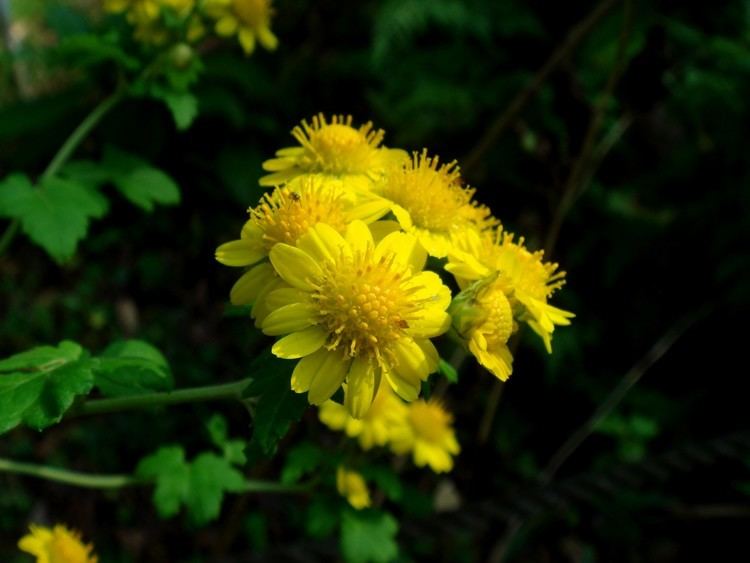Kingdom Plantae Family Asteraceae Rank Species | Order Asterales Genus Chrysanthemum | |
 | ||
Similar Dendranthema lavandulifolium, Chrysanthemum japonicum, Chrysanthemum zawadskii latilobum, Chrysanthemum pacificum, Chrysanthemum japonense | ||
Chrysanthemum boreale (or Dendranthema boreale) is a flowering plant within the Asteraceae family and Chrysanthemum genus. It used to be in the compositae family and many books still contain as such. It is a perennial flowering plant that is often noted because of its yellow flowers. It has 18 chromosomes at the diploid stage.
Contents
Distribution
C. boreale naturally occurs or is native to regions of eastern Asia such as Korea, Japan, and China. In China, it is found in the provinces Gansu, Sichuan, and Yunnan. In Japan, it is found primarily in Honshu and Kyushu. In Korea, it is found in Gyeongsangbuk, Gangwon, and Chungcheongbuk. Chrysanthemums may have been introduced to Japan by Chinese in the eighth century AD.
Habitat and ecology
C. boreale, a perennial plant, grows well in warm climates around East Asia. It flowers from October to November. The plant grows well on moist clayey soils in full sun. It is also quite immune to high temperatures and lack of moisture.
Morphology
The morphology of the plant consists of a herb and its flower. The herb is erect, and the flowers have yellow sepals and multiple carpals. The herb has a green, oblong leaf with pinnate venation. These leaves are about 5–7 cm in length and 4–6 cm in width. The leaf blade is broad, while the base is suddenly narrowed and of an ovate or lanceolate lobed shape. The leaves are in alternate arrangement throughout the stem. In addition, it has a broad sinus base with "dorsifixed pubescence" underneath. The petiole is about 1–2 cm long. The rhizome is short, while the stem is erect, long branched, and colored white pubescent. Also, there are only a few stem-leaves. The herb grows from 100 to 150 cm.
Reproduction
The C. boreale flowers grow in a corymb-style head and are terminal. They also have yellow heads that contain multiple carpals; these stretch from 14–15 mm in diameter. They also contain three or four oblong bracts that have soft tissue and are elliptical and tipped. These bracts have hemispherical involucre or coverings. In addition, the yellow corollas of the flower are about 5–7 mm long and 1.5–2 mm wide These heads stretch to about 1.5 cm in diameter. These bisexual florets have obtuse and irregular anther bases. They have pistillate ray florets that can be yellow or white. From these pistillates, they produce achenes, which are indehiscent and angled. The pappus, a modified calyx, is not present or extremely small.
Medicinal use
In Korea, C. boreale has been used to treat vertigo, a type of dizziness, in traditional medicine. In addition, its flowers have been used as an antipyretic. It has been also noted to have anti-inflammatory effects on disease such as atopic dermatitis.
Diseases
This particular type of chrysanthemum is noted to be affected by black plight. In addition, in Korea and other Asian countries, C. boreale has contracted a downy mildew infection caused by Paraperonospora minor. The fungi-like agents grow on leaves and turn them a yellowish color, and the plant eventually wilts until it dies out. This study was the first to find C. boreale with this infection.
